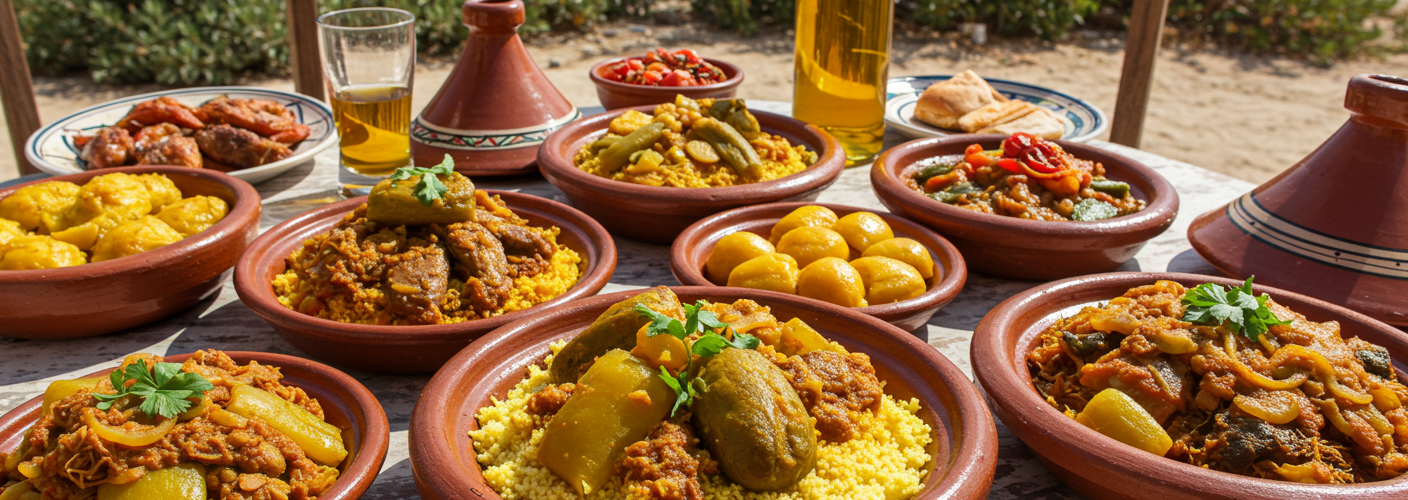Tunisian food is a vibrant and diverse blend of flavors, colors, and traditions that reflect the rich history and cultural influences of the North African country. Positioned at the crossroads of the Mediterranean, Tunisia’s culinary heritage has been shaped by various cultures including Berber, Arab, French, and Italian. This makes Tunisian dishes unique and full of character, perfect for food lovers seeking something new.
One of the most iconic elements of Tunisian cuisine is the use of spices. Harissa, a fiery chili paste made from roasted red peppers, garlic, and various spices, is the cornerstone that brings dishes to life. Found in a multitude of recipes, harissa adds depth and heat, making it an essential component of Tunisian cooking. Whether used as a condiment or an ingredient, it can elevate a simple dish into a flavor-packed experience.
Traditional Dishes
A quintessential dish that showcases the rich flavors of Tunisia is Couscous, often hailed as the national dish. Made from semolina wheat, couscous is traditionally steamed and served with a variety of vegetables and meats, usually seasoned with spices. The most popular variation is Couscous with Lamb and Vegetables, which is served on special occasions and family gatherings. The slow-cooked stew is infused with spices like cumin and coriander, giving it that distinctive Tunisian flavor.
Another beloved dish is Brik, a flaky pastry typically filled with egg and tuna, which is then deep-fried to golden perfection. This delightful snack is often enjoyed as an appetizer or street food and is accompanied by a squeeze of lemon. The combination of crispy shell and savory filling creates a mouthwatering treat that is hard to resist.
Street Food and Snacks
Tunisian street food is a true reflection of the country’s culinary creativity. Lablabi, a chickpea soup served with bread, garlic, and cumin, is a popular choice among locals. It is affordable, hearty, and perfect for any time of the day. Often garnished with a drizzle of harissa, this dish provides warming comfort on cooler days.
Makroud, a traditional sweet made from semolina and filled with dates or nuts, offers a delightful treat for those with a sweet tooth. These honey-drenched pastries are enjoyed throughout Tunisia and are especially popular during celebrations and festive occasions.
Fresh Ingredients
One of the distinguishing features of Tunisian cuisine is the extensive use of fresh ingredients. The Mediterranean climate allows for the cultivation of an array of fruits and vegetables. Olives, tomatoes, peppers, and herbs like parsley and coriander are staples in daily cooking. Fresh seafood is also abundant, given Tunisia’s extensive coastline, making its way into numerous dishes, particularly in coastal towns.
Conclusion
Tunisian food is a beautiful tapestry of flavors, inviting those who savor it to embark on a culinary adventure. With its unique spices, traditional dishes, and fresh ingredients, there’s something for everyone to enjoy. Whether you are trying a spicy harissa-laden couscous dish, a crispy brik, or a comforting bowl of lablabi, you are sure to experience the warmth and richness of Tunisian hospitality through its cuisine. As more travelers discover the charm of Tunisian food, it is destined to earn its place on the global culinary stage. So, the next time you’re looking to spice up your dining experience, look no further than the captivating flavors of Tunisia!




Add comment